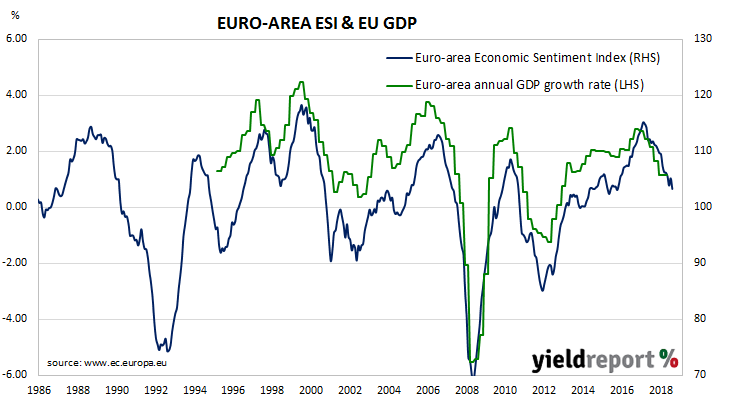The EU’s Economic Sentiment Indicator (ESI) is a composite index made up of five confidence indicators from the industrial, services, consumer, construction and retail trade sectors. As such, the index covers most parts of an economy. It is produced monthly and it has a high correlation with euro-area GDP.
From 2016, four years after the sovereign debt disaster of 2012, the ESI moved higher and higher until late 2017. It then reversed direction and began a downtrend which lasted all through 2018 and into 2019. The latest June figures indicate the trend has continued.
According to the figures released by the European Commission, the index registered 103.3 in June, less than the consensus figure of 104.6 and lower than May’s comparable figure of 105.3.

The lower-than-expected figures had a dampening effect on European sovereign bond yields and they finished a couple of basis points lower. By the end of the day, yields on German 10-year bunds and French 10-year ATS both closed 2bps lower to -0.32% and 0.00% respectively.

